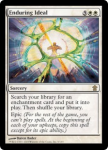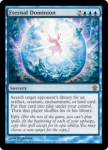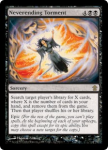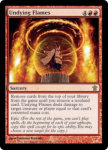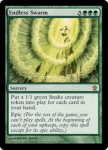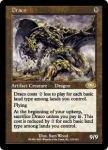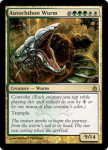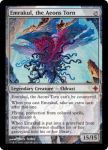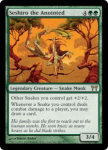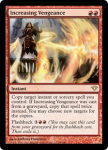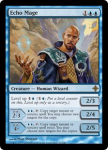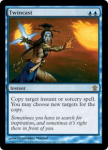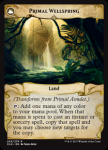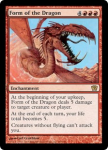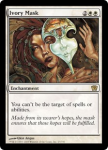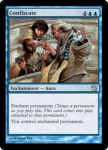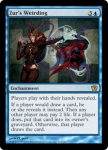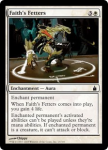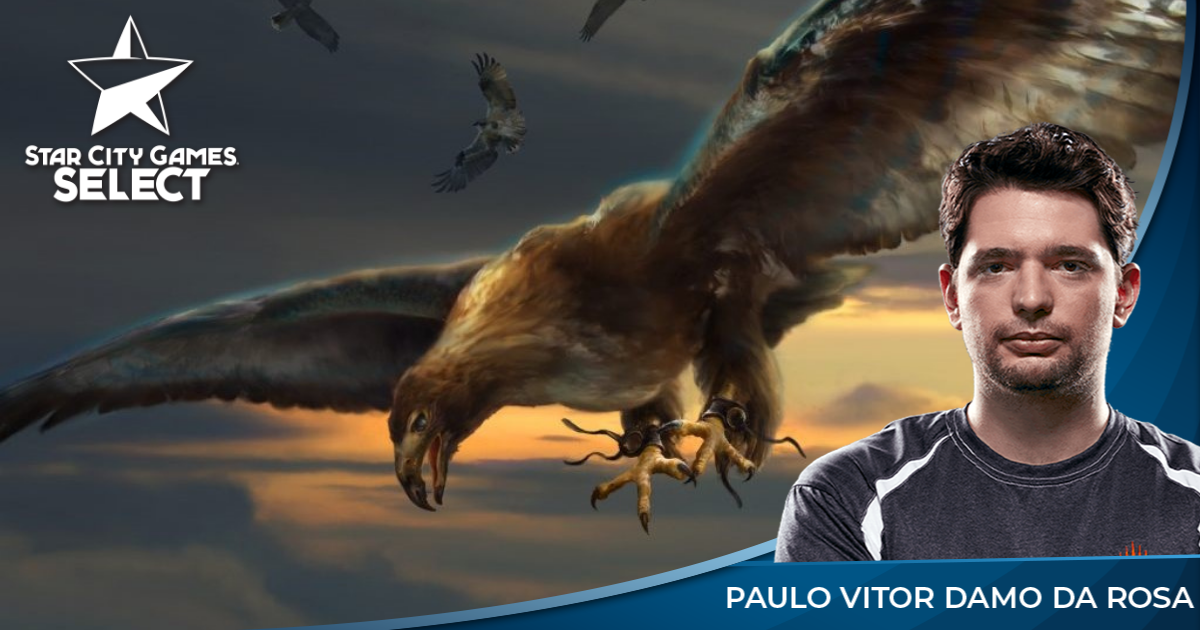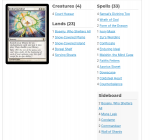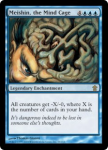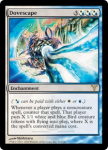I've seen the Blue and Green ones cast a few times but not the Black member of the cycle which is unplayable in formats like EDH and just worse Cap or Cranial Extraction in casual 60 card formats. But man, those cards are still so cool though!
Sadly, I think that's right. Neverending Torment gets a similar effect to Denying Wind, but Denying Wind can be followed up with subsequent spells, which makes its steeper cost well worth the difference here. Jester's Cap and similar effects have never really been something I've explored much, but I had someone in one of my old playgroups way back in the early 00's who kinda specialize in them. If your deck isn't prepared for this sort of card, it can be devastating. Like Jester's Cap, Denying Wind, Rootwater Thief, and several other versions of this effect, Neverending Torment is ineffective against highly redundant decks and gamebreaking against decks that rely on one or a few single card slots in order to function. It's possible to strip every possible kill condition from a combo deck (although they hope to kill you before you can even try). A simple beatdown deck might lose some of its most lethal threats, but there are simply too many of them to exile them all, so you're fighting an enemy on an axis where that enemy can ignore you and proceed to defeat you. Well, you can pull it off if you exile
enough cards, but that's a lot. You can pull it off if you are sufficiently protected so that your exile-from-library effect can happen enough times to sink in, but that's a roundabout way of saying that a control player can win the game after taking control of it. True, but not really helpful.
Ultimately, I do not think that the epic mechanic operates very well with a Jester's Cap style effect. The white and blue epic spells are simply more powerful. I've also seen the green one a lot more, but I put that down to how Neverending Torment doesn't scale well in 100-card formats. Further analysis causes me to reevaluate this, and I think that Endless Swarm is just overall a better card than Neverending Torment. The two are kind of a pair within this five-card cycle, as they're the only two that care about hand size. Endless Swarm is a bit less sensitive on this issue. Sure, you want a bigger hand, but if you only have four cards left in your hand when Endless Swarm goes off, maybe you already have a decent army of snakes to start with, and getting more will push you toward a quick kill. Having a smaller hand with Neverending Torment just means that your opponent gets
a lot more time to find a way to kill you.
So, it's the second-worst card in a cycle of cards that are already mostly hard to work with. But here's where I go to bat for Neverending Torment. Selective exile of cards from your opponent's library is an extremely powerful effect, and Magic players often seem to fail to grasp this because in tournament Magic, Jester's Cap started to become outclassed by more efficient decks a long, long time ago and there hasn't really been another version of this effect that quite pulled it off on the tournament scene. Sure, stuff like Surgical Extraction (or more recently, Opposition Agent) is relevant in tournaments, but that's different. Jester's Cap needs six mana. Denying Wind is nine mana. A lot of otherwise-decent cards just can't make the cut in tournament settings. But I contend that the effect of cards like this is inherently powerful. And Neverending Torment has this weird niche as a card that can do a Jester's Cap effect multiple times, by itself, for only a one-time mana investment. If the constraint that the epic mechanic imposes weren't so severe, Neverending Torment would be a pretty dangerous card. Yeah, that might sound trite or tautological or reminiscent of the complaints I had for Enduring Ideal in 2005, but I mean it. If you could get the good part of the epic mechanic without the bad part, most of the other cards in this cycle would become more playable, but their usage would remain pretty similar. Neverending Torment would go from being irrelevant to being potentially dominant. And otherwise control-heavy deck could sit back and crush opponents with this thing.
Losing access to spellcasting reins in Neverending Torment, but don't let that fool you into dismissing the potency of the effect itself. I've only seen it pulled off a couple of times, but it does pack a punch. I'd be tempted to try it myself, but man, an EDH pod is a bad place for this card, and Legacy has become such an efficient format that the time for this card is long-gone. If Modern or Extended gameplay had shaped up a bit differently in the past, this card would have had its moment to shine. Here's an example of a Modern deck from a couple of years ago.
1 Idyllic Tutor
4 Mastermind's Acquisition
1 Neverending Torment
4 Orzhov Signet
3 Porphyry Nodes
2 Journey to Nowhere
1 Quarantine Field
4 Runed Halo
4 Ghostly Prison
1 Oblivion Ring
4 Phyrexian Unlife
3 Solemnity
4 Leyline of Sanctity
1 Sphere of Safety
2 Arid Mesa
2 Fetid Heath
2 Godless Shrine
4 Marsh Flats
1 New Benalia
4 Nykthos, Shrine to Nyx
4 Plains
4 Temple of Silence
Sideboard:
1 Porphyry Nodes
1 Damping Sphere
1 Defense Grid
2 Greater Auramancy
4 Rest in Peace
1 Stony Silence
1 Suppression Field
1 Nevermore
1 Heliod, God of the Sun
1 Wrath of God
1 Neverending Torment
I don't know whether it ever worked particularly well in an actual tournament, but the concept is sound. Most opponents would dedicate only a few slots to cards that could break through the Solemnity + Phyrexian Unlife combo, and it's entirely possible that Neverending Torment could snag all of those from the opponent's library, especially after the first epic trigger. Even with only three cards left in hand, you're still exiling six cards by your first upkeep after casting the spell, which is probably more cards than the number of enchantment removal slots your opponent is running.
